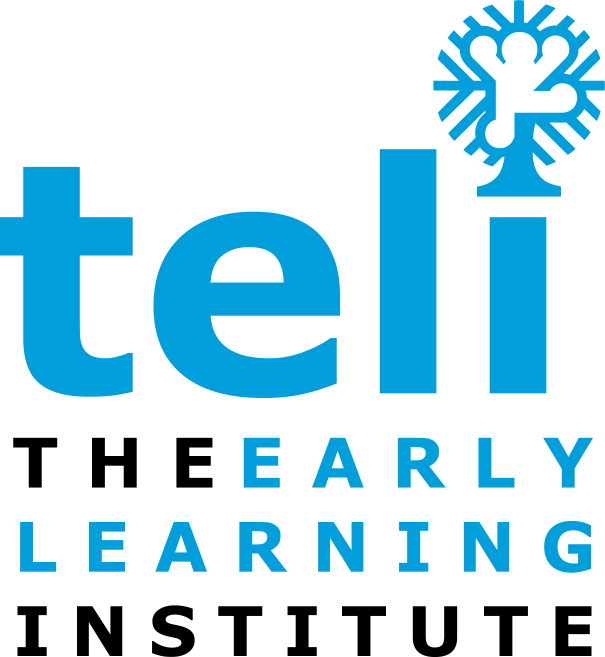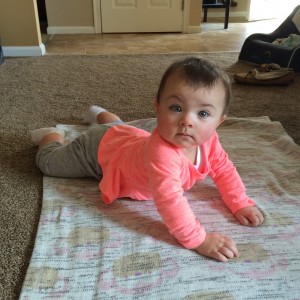 Why is Tummy Time an Important Part of Early Intervention?
Why is Tummy Time an Important Part of Early Intervention?
Wonder how your child’s Early Intervention activities make a difference?
Wonder why tummy time is an important time for your infant?
Over the past month, at teli, we have been exploring the “back story” of some of the Early Intervention activities that parents are encouraged to practice with their children. Thanks to some of our teli therapists and parent’s suggestions, this week we are featuring some common physical therapy activities.
 Jeannine Moyer, a teli Physical Therapist, with more than 18 years of experience in Early Intervention explains how some of the exercises or positions she recommends for a child can make a difference. “I take that opportunity to help parents understand the ‘why’. Often the explanation provides parents with even more reason to incorporate these activities into their routine. They understand and see the benefit of what I am asking them to do, now and for the sake of future development,” explains Jeannine.
Jeannine Moyer, a teli Physical Therapist, with more than 18 years of experience in Early Intervention explains how some of the exercises or positions she recommends for a child can make a difference. “I take that opportunity to help parents understand the ‘why’. Often the explanation provides parents with even more reason to incorporate these activities into their routine. They understand and see the benefit of what I am asking them to do, now and for the sake of future development,” explains Jeannine.
The following are some of the most common questions Jeannine hears from parents.
“My baby doesn’t like to be on his belly. Is tummy time necessary?”
Jeannine’s answer is an emphatic YES! “Tummy time is important as they begin to develop head control and motor skills,” notes Jeannine, “Lifting their head against gravity helps them to strengthen their neck and back muscles as well as their shoulder and arm muscles as they begin to push against the surface. Tummy time helps to build a foundation for other skills as an infant develops proper alignment of the spine and postural control needed for sitting, crawling, and walking. It is also an opportunity to practice visual tracking which is when they move their eyes in a coordinated manner as they turn their head. Additionally, too much time on their back may cause the head to become flat and deformed.”
So how do you ensure your child is getting enough tummy time? Jeannine recommends that as with most Early Intervention therapies, the activity becomes part of your normal family routine. “For example, after each diaper change, have 10 minutes of tummy time. A fun interaction for parent and child might be to lay your baby on your chest to have face-to-face time. If your child has reflux, start by holding them in a ‘superman’ pose, or across your lap, spreading your legs to support under their chest and legs,” suggests Jeannine.
“If my baby keeps his head turned to the right, why are we stretching the left side of his neck?”
Torticollis is a very common condition when a baby has a strong preference to keep their head turned or tilted to one side, because of tightness in the neck. Early Intervention Physical Therapy is needed to help the child have greater ease of motion through stretching and strengthening.
“The muscle responsible for torticollis has attachments sites behind the ear and on the sternum, which creates a diagonal pull. If the left side of the neck is tight, the head tilts to the left but turns to the right,” explains Jeannine. “To address this issue, a stretching program usually includes a tilting stretch (in this case, trying to bring the right ear toward the right shoulder), and a turning stretch (trying to turn the chin toward the left shoulder). It typically takes stretching numerous times every day for several months to remedy this condition.”
“What do orthotics do for my toddler?”
The proper foot position for a toddler has significant implications not only for their ability to walk in proper alignment, but for their long term growth. “Improper alignment places the ligaments and muscles under strain and puts pressure on the soft bones which can permanently deform the shape of the bone as it is growing,” cautions Jeannine.
Ankle foot orthotics (AFOs) are used to position the foot in proper alignment for more stability and to prevent permanent deformity. In some cases, foot position may improve on its own through strengthening of the ankle muscles or stretching of tight muscles. However if the foot position is not improving, then orthotics may help to properly align the foot and ankle so that the muscles are working in a more efficient pattern.
In each of these cases, Early Intervention Physical Therapists utilize these activities and tools to help a child to begin to build skills that enable a long term integration of movement or ability that becomes second nature to them. They may seem to be focused on a current challenge, but often the activities that are used have an impact on the child’s overall development.
Learn more about Early Intervention, Jeannine Moyer or call 412-922-8322 to get your questions answered.

 Why is Tummy Time an Important Part of Early Intervention?
Why is Tummy Time an Important Part of Early Intervention?
